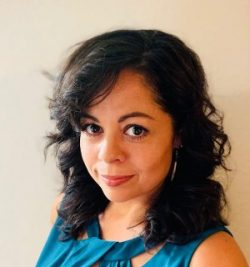Articles/Essays – Volume 54, No. 2
Roundtable: Considering the Next Generation of Indigenous Children
The year was 1984 in Reading, Pennsylvania, and an elementary school was practicing for a Thanksgiving play. Children were on stage dressed as Pilgrims, Native Americans, pumpkins, and turkeys while teachers rushed around helping excited kids learn their parts. I was just seven years old, a small girl with waist-length black hair wearing a paper feather and headband.
As I looked around at the other children, I was surprised to find that I was the only Native American child. Suddenly, I felt alone, never having considered before how I was different. This one seemingly inconsequential moment would stay with me, setting me on a path of endless curiosity about the history of the first people of this land.
In the following years, I would ask many questions such as: “Where did all the people who looked like me in this part of the country go? What happened to them?” I was taught that Indigenous people had not been protected because of the unrighteous choices of their ancestors. I learned about Lehi’s counsel in the summary of 2 Nephi 1: “Lehi prophesies of a land of liberty—His seed will be scattered and smitten if they reject the Holy One of Israel.” I was taught how Lehi’s prophecy was connected to 1 Nephi 13:12, which mentions a sea traveler often believed to be Christopher Columbus, although the scripture never states his name. I was raised with manifest destiny teachings alongside religious beliefs.
In January 2018, an LDS missionary taught me the following: “Lamanites became the Native Americans who were in the Americas when Columbus came and settled the land. That’s why there was no religion established in the land when Columbus came, because the Lamanites didn’t believe in Christ.” My people had no religion? This was an offensive and completely incorrect assumption. Columbus settled the land? It was already home to millions of people. As jarred as I felt, I was not surprised. Beliefs about history take time to correct.
The truth about the horrendous actions of Columbus upon a peaceful people is heartbreaking for the Indigenous people of this land. The Mormon idea that the people were not protected due to their ancestors’ unrighteousness lays the fault of genocide at their own feet. To say Columbus was guided by God himself only adds to that pain. Who carries that pain?
Indigenous people have long borne the scars of assumptions and labels. Each generation has been raised carrying the weight of appropriated ancestry and interpretations of scripture taught as fact. Changes need to be made so that the children we are now raising do not incur these same wounds. Though these are difficult issues, they are not without hope. All around us are beautiful and determined people striving to improve the world. Correcting these issues need not weaken us but instead unite us as we include and celebrate the survival of the first peoples of this land. Let us be honest in our dealings with our fellowman and show honor to Indigenous children through that.
Note: The Dialogue Foundation provides the web format of this article as a courtesy. There may be unintentional differences from the printed version. For citational and bibliographical purposes, please use the printed version or the PDFs provided online and on JSTOR.


 Back to full Issue
Back to full Issue

